Iron Casting
-

OEM Custom Grey Iron Casting
Basic Info
Die Casting Machine Type: Cold Chamber Die Casting Machine
Die Casting Method: Soluble Die Casting
Application: Machinery Parts
Machining: CNC Machining
Tolerance Grade: 8
Casting Surface Quality Level: 3
Certification: SGS, ISO 9001:2008
Size: As Per Drawing
Additional Info
Packaging: standard export package
Productivity: 100 Ton/Month
Brand: Mingda
Transportation: Ocean,Land,Air
Place of Origin: China
Certificate: ISO9001
Port: Tianjin -
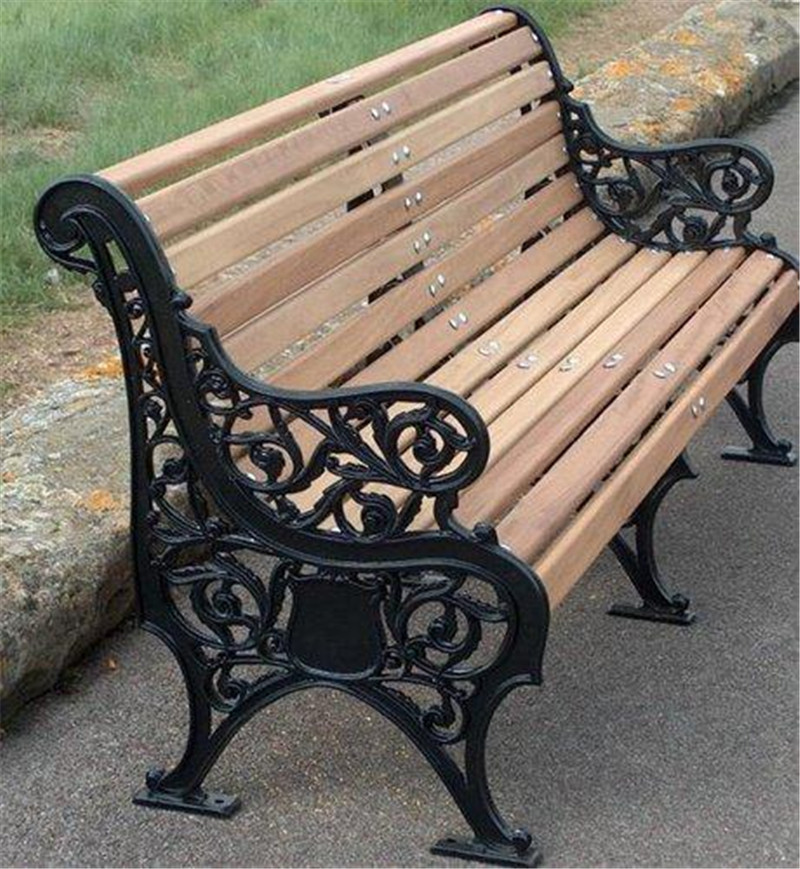
Cast Iron Bench Ends for Outdoor Furniture
Basic Info
Material: Metal
Style: European
Fixed: Fixed
Armrest: With Armrest
Rotary: Rotary
Certification: CE, SGS
Height Adjustable: Unadjustable
Color: White
Customized: Customized
Condition: New
Additional Info
Packaging: standard export package
Productivity: 100 pcs/Month
Brand: Mingda
Transportation: Ocean,Land,Air
Place of Origin: China
Supply Ability: 100pcs/day
Port: Tianjin -
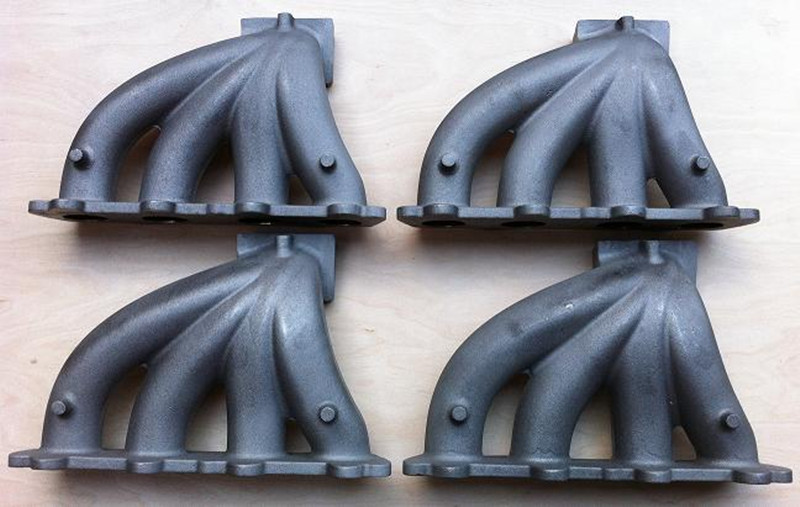
OEM Custom Ductile Iron Casting
Basic Info
Die Casting Machine Type: Cold Chamber Die Casting Machine
Die Casting Method: Soluble Die Casting
Application: Machinery Parts
Machining: CNC Machining
Tolerance Grade: 8
Casting Surface Quality Level: 3
Certification: SGS, ISO 9001:2008
Size: As Per Drawing
Additional Info
Packaging: standard export package
Productivity: 100 Ton/Month
Brand: Mingda
Transportation: Ocean,Land,Air
Place of Origin: China
Certificate: ISO9001
Port: Tianjin -

Precision cast iron tie rod
OEM Stainless Steelcastings, lost wax production craft, machining choice will be according to the actual tolerance request and demand quantity. Most of Our produced castings are used for valves, hydrants, pumps,trucks,railway and train and so on.
Manufacturing technique:Lost Wax Precision Casting
Material: SS316, SS304, 1.4310
Product weight:0.2Kg-200Kg -

Cast iron engine casing
Cast iron is an alloy consisting mainly of iron, carbon, and silicon.
In these alloys, the carbon content exceeds the amount that can be retained in austenite solid solution at eutectic temperature.
Cast iron is an iron-carbon alloy with a carbon content greater than 2.11% (generally 2.5 ~ 4%).It is a multi-element alloy with iron, carbon and silicon as the main component elements and contains more manganese, sulfur, phosphorus and other impurities than carbon steel.Sometimes in order to improve the mechanical properties of cast iron or physical, chemical properties, but also add a certain amount of alloy elements, alloy cast iron.
As early as the sixth century BC age period, China has begun to use cast iron, than European countries nearly two thousand years earlier.Cast iron is still one of the most important materials in industrial production.
oneAccording to the form of carbon present in cast iron, cast iron can be divided into
1.White cast iron except for a few soluble in ferrite, the rest of the carbon in the form of cementite exists in cast iron, its fracture is silver-white, so called white cast iron.White cast iron is mainly used as raw material for steelmaking and blank for producing malleable cast iron.
2.Gray cast iron carbon all or most of the flake graphite exists in the cast iron, its fracture is dark gray, so called gray cast iron.
3.Part of the carbon of hemp cast iron exists in the form of graphite, which is similar to gray cast iron.The other part is in the form of free cementite similar to white cast iron.The black and white pitting in the fracture, so called hemp cast iron.This type of cast iron also has greater hardness and brittleness, so it is rarely used in the industry.
twoAccording to the different graphite morphology in cast iron, cast iron can be divided into
1.The graphite in gray cast iron is flake.
2.The graphite in malleable cast iron is flocculent.It is obtained from certain white cast iron after annealing at high temperature for a long time.Its mechanical properties (especially toughness and plasticity) are higher than gray cast iron, so it is commonly called malleable cast iron.
3.The graphite in nodular cast iron is spherical.It is obtained by spheroidizing treatment before pouring molten iron.This kind of cast iron not only has higher mechanical properties than gray cast iron and malleable cast iron, but also has a simpler production process than malleable cast iron. Moreover, its mechanical properties can be further improved through heat treatment, so it is increasingly widely used in production.
-

Cast iron ring
Cast iron is an alloy consisting mainly of iron, carbon, and silicon.
In these alloys, the carbon content exceeds the amount that can be retained in austenite solid solution at eutectic temperature.
Cast iron is an iron-carbon alloy with a carbon content greater than 2.11% (generally 2.5 ~ 4%).It is a multi-element alloy with iron, carbon and silicon as the main component elements and contains more manganese, sulfur, phosphorus and other impurities than carbon steel.Sometimes in order to improve the mechanical properties of cast iron or physical, chemical properties, but also add a certain amount of alloy elements, alloy cast iron.
As early as the sixth century BC age period, China has begun to use cast iron, than European countries nearly two thousand years earlier.Cast iron is still one of the most important materials in industrial production.
oneAccording to the form of carbon present in cast iron, cast iron can be divided into
1.White cast iron except for a few soluble in ferrite, the rest of the carbon in the form of cementite exists in cast iron, its fracture is silver-white, so called white cast iron.White cast iron is mainly used as raw material for steelmaking and blank for producing malleable cast iron.
2.Gray cast iron carbon all or most of the flake graphite exists in the cast iron, its fracture is dark gray, so called gray cast iron.
3.Part of the carbon of hemp cast iron exists in the form of graphite, which is similar to gray cast iron.The other part is in the form of free cementite similar to white cast iron.The black and white pitting in the fracture, so called hemp cast iron.This type of cast iron also has greater hardness and brittleness, so it is rarely used in the industry.
twoAccording to the different graphite morphology in cast iron, cast iron can be divided into
1.The graphite in gray cast iron is flake.
2.The graphite in malleable cast iron is flocculent.It is obtained from certain white cast iron after annealing at high temperature for a long time.Its mechanical properties (especially toughness and plasticity) are higher than gray cast iron, so it is commonly called malleable cast iron.
3.The graphite in nodular cast iron is spherical.It is obtained by spheroidizing treatment before pouring molten iron.This kind of cast iron not only has higher mechanical properties than gray cast iron and malleable cast iron, but also has a simpler production process than malleable cast iron. Moreover, its mechanical properties can be further improved through heat treatment, so it is increasingly widely used in production.
-
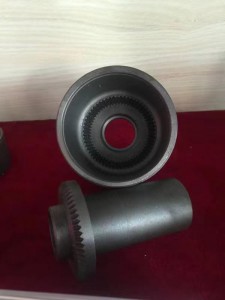
Cast iron conical gear
Cast iron is an alloy consisting mainly of iron, carbon, and silicon.
In these alloys, the carbon content exceeds the amount that can be retained in austenite solid solution at eutectic temperature.
Cast iron is an iron-carbon alloy with a carbon content greater than 2.11% (generally 2.5 ~ 4%).It is a multi-element alloy with iron, carbon and silicon as the main component elements and contains more manganese, sulfur, phosphorus and other impurities than carbon steel.Sometimes in order to improve the mechanical properties of cast iron or physical, chemical properties, but also add a certain amount of alloy elements, alloy cast iron.
As early as the sixth century BC age period, China has begun to use cast iron, than European countries nearly two thousand years earlier.Cast iron is still one of the most important materials in industrial production.
oneAccording to the form of carbon present in cast iron, cast iron can be divided into
1.White cast iron except for a few soluble in ferrite, the rest of the carbon in the form of cementite exists in cast iron, its fracture is silver-white, so called white cast iron.White cast iron is mainly used as raw material for steelmaking and blank for producing malleable cast iron.
2.Gray cast iron carbon all or most of the flake graphite exists in the cast iron, its fracture is dark gray, so called gray cast iron.
3.Part of the carbon of hemp cast iron exists in the form of graphite, which is similar to gray cast iron.The other part is in the form of free cementite similar to white cast iron.The black and white pitting in the fracture, so called hemp cast iron.This type of cast iron also has greater hardness and brittleness, so it is rarely used in the industry.
twoAccording to the different graphite morphology in cast iron, cast iron can be divided into
1.The graphite in gray cast iron is flake.
2.The graphite in malleable cast iron is flocculent.It is obtained from certain white cast iron after annealing at high temperature for a long time.Its mechanical properties (especially toughness and plasticity) are higher than gray cast iron, so it is commonly called malleable cast iron.
3.The graphite in nodular cast iron is spherical.It is obtained by spheroidizing treatment before pouring molten iron.This kind of cast iron not only has higher mechanical properties than gray cast iron and malleable cast iron, but also has a simpler production process than malleable cast iron. Moreover, its mechanical properties can be further improved through heat treatment, so it is increasingly widely used in production.
-
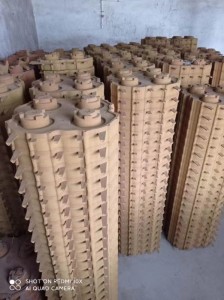
Cast iron coated sand shell
Cast iron is an alloy consisting mainly of iron, carbon, and silicon.
In these alloys, the carbon content exceeds the amount that can be retained in austenite solid solution at eutectic temperature.
Cast iron is an iron-carbon alloy with a carbon content greater than 2.11% (generally 2.5 ~ 4%).It is a multi-element alloy with iron, carbon and silicon as the main component elements and contains more manganese, sulfur, phosphorus and other impurities than carbon steel.Sometimes in order to improve the mechanical properties of cast iron or physical, chemical properties, but also add a certain amount of alloy elements, alloy cast iron.
As early as the sixth century BC age period, China has begun to use cast iron, than European countries nearly two thousand years earlier.Cast iron is still one of the most important materials in industrial production.
oneAccording to the form of carbon present in cast iron, cast iron can be divided into
1.White cast iron except for a few soluble in ferrite, the rest of the carbon in the form of cementite exists in cast iron, its fracture is silver-white, so called white cast iron.White cast iron is mainly used as raw material for steelmaking and blank for producing malleable cast iron.
2.Gray cast iron carbon all or most of the flake graphite exists in the cast iron, its fracture is dark gray, so called gray cast iron.
3.Part of the carbon of hemp cast iron exists in the form of graphite, which is similar to gray cast iron.The other part is in the form of free cementite similar to white cast iron.The black and white pitting in the fracture, so called hemp cast iron.This type of cast iron also has greater hardness and brittleness, so it is rarely used in the industry.
twoAccording to the different graphite morphology in cast iron, cast iron can be divided into
1.The graphite in gray cast iron is flake.
2.The graphite in malleable cast iron is flocculent.It is obtained from certain white cast iron after annealing at high temperature for a long time.Its mechanical properties (especially toughness and plasticity) are higher than gray cast iron, so it is commonly called malleable cast iron.
3.The graphite in nodular cast iron is spherical.It is obtained by spheroidizing treatment before pouring molten iron.This kind of cast iron not only has higher mechanical properties than gray cast iron and malleable cast iron, but also has a simpler production process than malleable cast iron. Moreover, its mechanical properties can be further improved through heat treatment, so it is increasingly widely used in production.
-
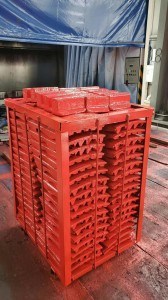
Cast iron plate
Cast iron is an alloy consisting mainly of iron, carbon, and silicon.
In these alloys, the carbon content exceeds the amount that can be retained in austenite solid solution at eutectic temperature.
Cast iron is an iron-carbon alloy with a carbon content greater than 2.11% (generally 2.5 ~ 4%).It is a multi-element alloy with iron, carbon and silicon as the main component elements and contains more manganese, sulfur, phosphorus and other impurities than carbon steel.Sometimes in order to improve the mechanical properties of cast iron or physical, chemical properties, but also add a certain amount of alloy elements, alloy cast iron.
As early as the sixth century BC age period, China has begun to use cast iron, than European countries nearly two thousand years earlier.Cast iron is still one of the most important materials in industrial production.
oneAccording to the form of carbon present in cast iron, cast iron can be divided into
1.White cast iron except for a few soluble in ferrite, the rest of the carbon in the form of cementite exists in cast iron, its fracture is silver-white, so called white cast iron.White cast iron is mainly used as raw material for steelmaking and blank for producing malleable cast iron.
2.Gray cast iron carbon all or most of the flake graphite exists in the cast iron, its fracture is dark gray, so called gray cast iron.
3.Part of the carbon of hemp cast iron exists in the form of graphite, which is similar to gray cast iron.The other part is in the form of free cementite similar to white cast iron.The black and white pitting in the fracture, so called hemp cast iron.This type of cast iron also has greater hardness and brittleness, so it is rarely used in the industry.
twoAccording to the different graphite morphology in cast iron, cast iron can be divided into
1.The graphite in gray cast iron is flake.
2.The graphite in malleable cast iron is flocculent.It is obtained from certain white cast iron after annealing at high temperature for a long time.Its mechanical properties (especially toughness and plasticity) are higher than gray cast iron, so it is commonly called malleable cast iron.
3.The graphite in nodular cast iron is spherical.It is obtained by spheroidizing treatment before pouring molten iron.This kind of cast iron not only has higher mechanical properties than gray cast iron and malleable cast iron, but also has a simpler production process than malleable cast iron. Moreover, its mechanical properties can be further improved through heat treatment, so it is increasingly widely used in production.
